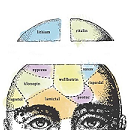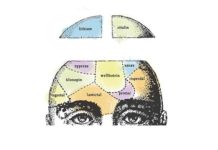ADHD Medication Risks Outweigh Benefits in Most Cases
A systematic review of studies of stimulant medications for ADHD has concluded that the drugs should be used as a last resort, in rare...
More Time in Foster Care Linked to More Psychotropic Medicating
Children as young as four in foster care are taking three or more psychotropic medications, and the length of time that children aged six...
The Dangers of Screening Without a Diagnostic Method
A blog post from AbleChild raises questions about efforts in Connecticut to expand psychiatric screening and treatments for children and youth. "Since the...
Medicalizing Poverty
In his Alternatives Conference 2012 Address, Will Hall called attention to the ongoing phenomena of “medicalizing poverty and calling it mental illness.” Mental health systems and practitioners often tend to perceive and identify the myriad ways that impoverished people cope and adapt to adverse environments (such as food and housing insecurity) as pathological indicators of mental illness. A poor child who does not pay attention to the day’s lessons at school may be diagnosed with ADHD, yet focuses intense attention on how he will return home safely, take care of his siblings and get a meal. A young woman may be labeled as Oppositional/Defiant who bravely copes with an erratic mother and her abusive boyfriend. Behaviors that can make sense in one context (home, neighborhood), are flagged as dysfunctional and impaired in another (school & work).
The Logic of the ADHD Diagnosis
When constructing the ADHD diagnosis, progenitors essentially say, "Let's study a group of people who do particular hyperactive, impulsive, and distracted behaviors that are associated with chronic and pervasive problems in school, social life, and work. If the person is an adult, the problems must be present in childhood and show consistency throughout development. We will call this group "ADHD" and study correlated biological characteristics and other associated difficulties. We will continue to tweak the criteria so that the diagnostic net falls on the people with the correlated dysfunctions and patterns of biology that we find in our research.
Stimulants Double Adverse Cardiovascular Events in Children
In what they describe as the first large-scale, long-term, nation-wide study of its kind, Danish researchers have confirmed that ADHD stimulants double the risk...
Healing from an Addiction to Patterned Ways of Thinking
I had a soul-redemptive heart-to-heart reunion with a woman I had known from a distance but whom now (after our hours long coeur-a-coeur/heart-to-heart) I consider a close friend. I shared with her some very exciting and some challenging circumstances I have been experiencing of late. After I shared and shed a few tears she told me a story from her life that also poses, like my story, an invitation for profound change in our lives.
Long-term Safety of ADHD Drugs Has Never Been Studied
Even though about 10% of American children have been diagnosed with ADHD and most are taking stimulant medications for it, Boston Children’s Hospital researchers...
ADHD: A Return to Psychology
Attention Deficit Hyperactivity Disorder (ADHD) has become the province of geneticists, neuropsychologists, and physicians. The prevailing view is that ADHD behaviors are caused by a neurobiological delay and that treatment must include medication and stringent management. While this general attitude may continue to prosper, there is increasing concern that we are proposing the existence of a medical problem when there are no biological markers or dysfunctions that reliably correspond with the behavioral criteria. It is vital that we more closely examine traditional beliefs about ADHD and review the shortcomings of commonly used treatments.
Sleep Deprivation Leads to Schizophrenia-like Experiences
Researchers from the University of Bonn and King’s College London were “amazed” at the range of experiences associated with schizophrenia that were induced in...
The Proactive Search for Mental Illnesses in Children
Part one of a two-part Mad In America investigation into the expansion of psychological screening and electronic surveillance of children and youth. A new government-funded mental health training program for British Columbia family physicians and school staff promotes screening for mental disorders in all children and youth. Critics say the program omits key scientific evidence, seems more like drug promotion than medical education, and downplays serious potential harms. Nevertheless, programs like it are rolling out across Canada and the US.
Researchers Blog about Links Between ADHD Prescribing and Drug Costs
University of Toronto and Princeton University researchers take to Bloomberg View to discuss the findings from their large-scale, long-term study of ADHD and medicating...
Drug Detailing More Influential than FDA Approval
FDA approvals are less influential on prescribing patterns than pharmaceutical sales marketers are, according to a study in Health Affairs. University of California and...
Even Low Lead Levels Affect Child Behaviors
A team of American and Chinese researchers funded by the National Institute of Environmental Health Sciences report in JAMA Pediatrics that lead concentrations in...
What are Stimulants’ Effects on Anxiety?
Psychiatrist Richard Friedman argues in the New York Times that there are aspects of natural brain development that make teenagers more prone to both...
More Research Links Autism to Pesticides
Autism and rates of other neurogically-related problems are higher in areas where large amounts of chemical pesticides are used, according to University of California...
Video Interview with Justina Pelletier
Fox CT has posted a video of their full 17-minute interview of teen Justina Pelletier by journalist Beau Berman, shortly after Justina's release from...
Nice doctors achieve better depression outcomes
Psychiatric Times has published a discussion of the research comparing the effectiveness of antidepressant medications under different conditions. “First, there seem to be no...
From Self Care to Collective Caring
As a trauma survivor growing up in various adolescent mental health systems, I never learned any useful self-care tools or practices. I was taught that my current coping skills (self-injury, suicidal behavior, illicit drug use) were unacceptable, but not given any ideas as to what to replace them with. No one seemed to want to know much about the early childhood traumas that were driving these behaviors. Instead, I collected an assortment of diagnoses. I was told that I would be forever dependent on mediated relationships with professionals, and an ever-changing combination of pills. The message was that my troubles were chemical in nature and largely beyond my control.
Psychiatrization of Children Explored
An entire special issue of the journal Children & Society is dedicated to examining questions surrounding “psychiatrised children.” Various studies explore how rarely children’s...
In-school Exercise a Help for Attention Deficits
Researcher Michele Tine of Dartmouth College’s Poverty and Learning Lab reports in the journal Frontiers in Psychology that 12 minutes of aerobic exercise caused...
What’s driving the increase in child medicating?
National Institute of Mental Health Director Thomas Insel suggests in his blog that the fact 4.3% of American children are taking psychostimulants may not...
Childhood Residential Mobility Linked to Schizophrenia, Bipolar Disorder
Noting that "childhood adversity is gaining increasing attention as a plausible etiological factor in the development of psychotic disorders," researchers from Johns Hopkins, Aarhus...
Reflections on a Pathologized Adolescence and a Vision for the Future
My heart envisions a future of grassroots community-based, free, accessible, welcoming, non-judgmental and safe spaces for young people in the middle of the hurricane of adolescence....They will be spaces facilitated by those of us who’ve reclaimed what it means to be human.
A Daughter’s Call for Safety and Sanity in Mental Health
My mother was once a bright, creative, beautiful young woman, a promising artist and a poet, who was captivated by the hippie movement. She was a creative bohemian artist, defying the conventions of our middle-class Jewish Midwestern family, which had carried a tradition of holding emotions inside and acting stoic. One day, soon after my grandparents’ divorce, she left. She hitched a ride to California, and from that point on, was never the same. The police picked her up on a park bench in Arizona, and she was committed for the first time at age 18. She rotated in and out of mental hospitals, the streets, and jail until her death.











